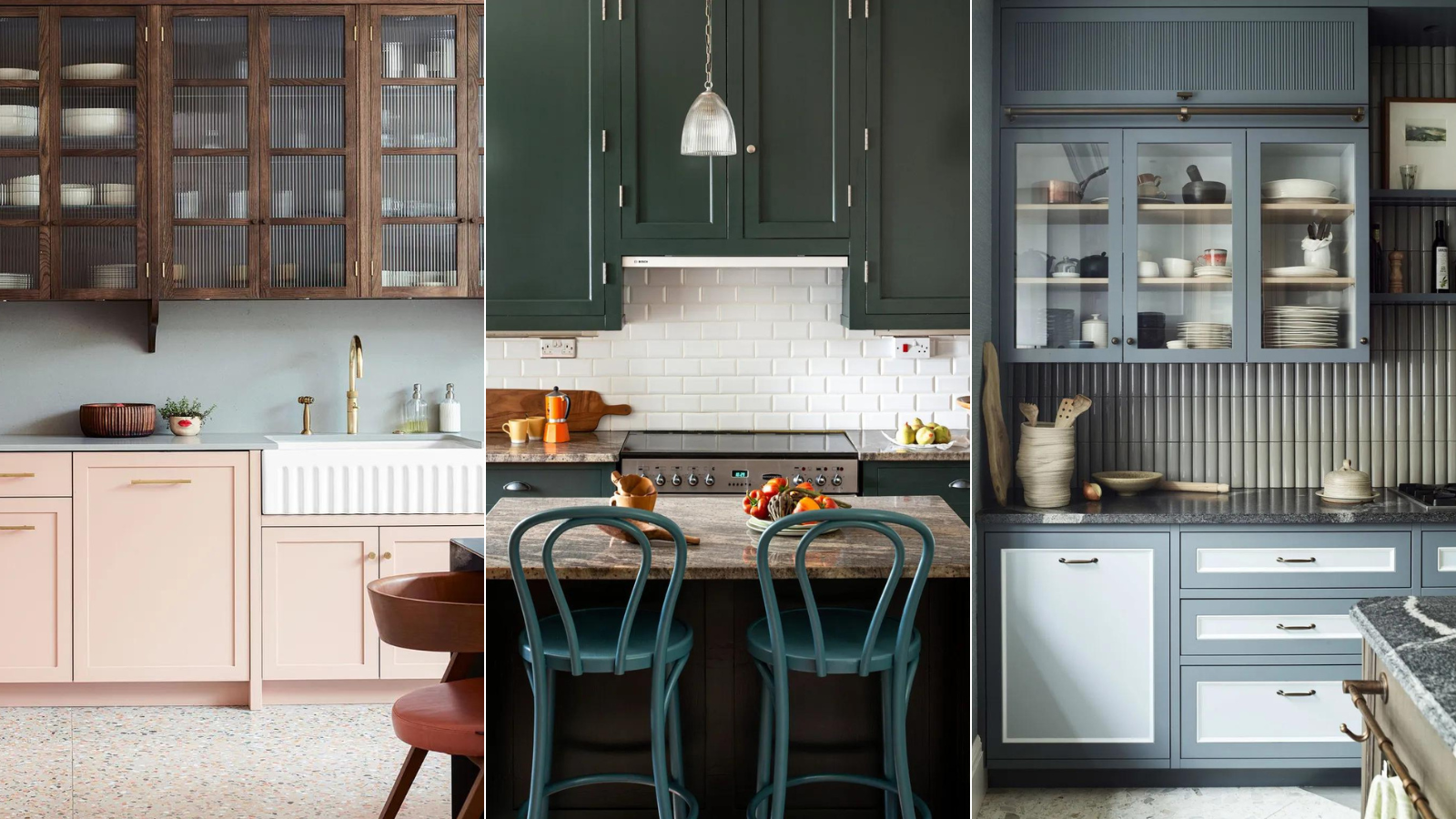
With the kitchen coming under increasing pressure to perform a variety of crucial roles, such as family dining, relaxing, working, and entertaining, adequate kitchen storage ideas are more important than ever – and none more so than your kitchen cabinets.
Well-ordered cabinets are key to organizing a kitchen – and can also mean avoiding scenarios such as running out of ingredients, or replacing them before necessary. Even the issues of buying duplicates of less-used cookware, or losing time rummaging around to locate special-occasion serveware can be evaded with just a few smart tips for organizing kitchen cabinets.
If it’s easy to find ingredients and equipment, cooking will be more enjoyable, while good storage can make the room feel less cluttered and more spacious. ‘It is important to strike a balance between functionality and style,’ says interior designer Irene Gunter, founder of Gunter & Co. ‘For example, incorporating open shelves for displaying objects and cookbooks can provide storage as well as create a visually appealing space.’ She also advises paying attention to how you maximize space. In my own kitchen, I use a selection of organizing racks, cabinet inserts, tension rods, and shelf risers to make the most of unused space and eliminate dead space in a kitchen cabinet.
What is the correct way to organize kitchen cabinets?
Keeping everything neatly behind closed doors is much easier if the interiors are designed with specific contents in mind. Smaller items will benefit from a shallow drawer with numerous compartments to keep items separated and easy to locate. Consider whether any cupboards will benefit from integral electrical outlets, allowing you to charge gadgets out of view. Spice jars often come in standard sizes so shelving can be fitted at precise heights to maximize space.
Here we explore the best tactics for systematizing a kitchen’s cabinet contents – which will also prove useful for laundry room organization, pantry organization, and utility room organization – with experts sharing their advice, including some of the best Amazon organizers on sale.
1. Decant pantry staples into jars, canisters and bottles
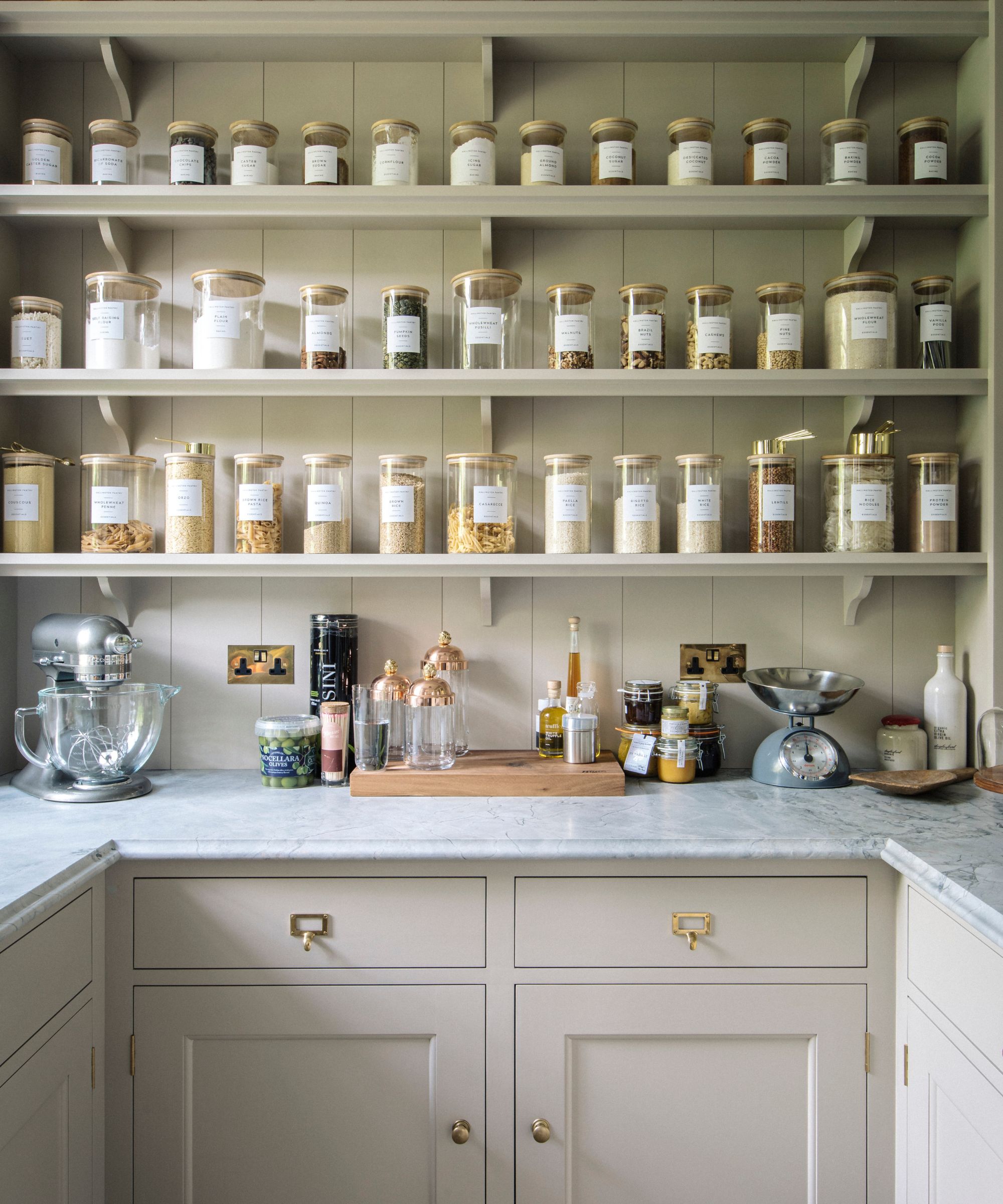
Whether you have a pull-out larder or a walk-in pantry, organizing your storage and pantry staples by decanting foodstuffs into coordinating containers will make your kitchen look more luxurious and create a sense of uniformity and tidiness. But ask yourself whether it’s a task you’ll be able to stay on top of when life gets busy.
‘Decanting into beautiful glass jars always looks picture-perfect on social media but isn’t always as neat in reality. It’s an extra task after grocery shopping, so won’t suit everyone’s natural tendencies,’ says professional organizer Katherine Blackler, founder of SortMySpace.
‘Grains and pastas don’t always come in matching volume sizes so you will still need to have an overflow area for the opened packets. And you should decide whether you always empty a jar fully before topping up to ensure you don’t leave very old produce at the bottom of the jar.’
2. Consider a corner cabinet
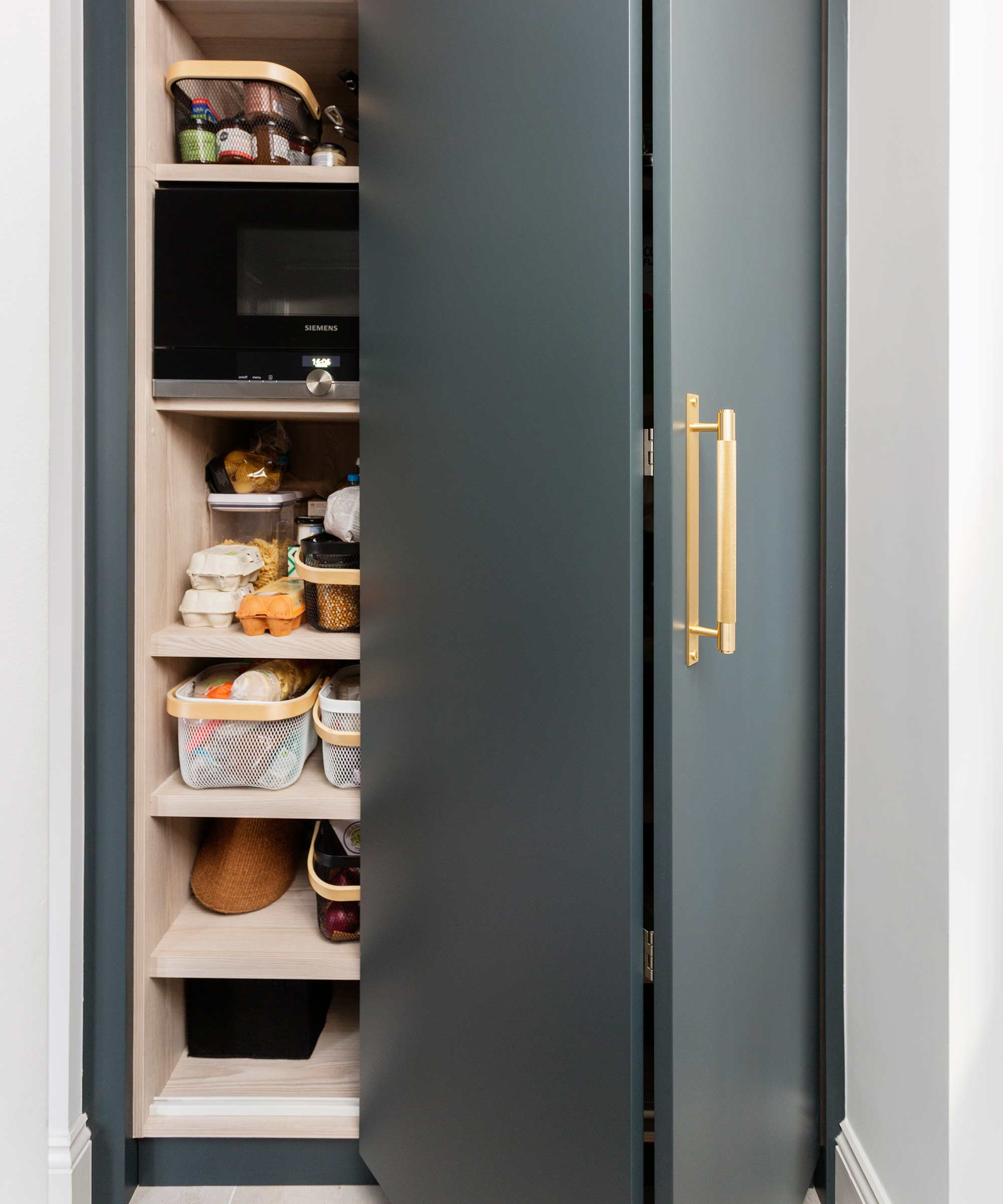
‘Especially useful when designing a small kitchen, corner cabinets can add functional food storage in an underused space,’ says Josie Medved, design manager, Symphony.
In most settings, it makes sense to make use of the full height of the corner for maximum capacity. Double, folding, sliding or pocket doors allow easy access to the cabinet, with minimal protrusion into the space. Corner drawers, shelf pull-outs and rotating lazy Susan systems are worth considering, especially if the cabinet is deep, so that you can readily access contents at the back.
3. Opt for cabinetry pull-outs
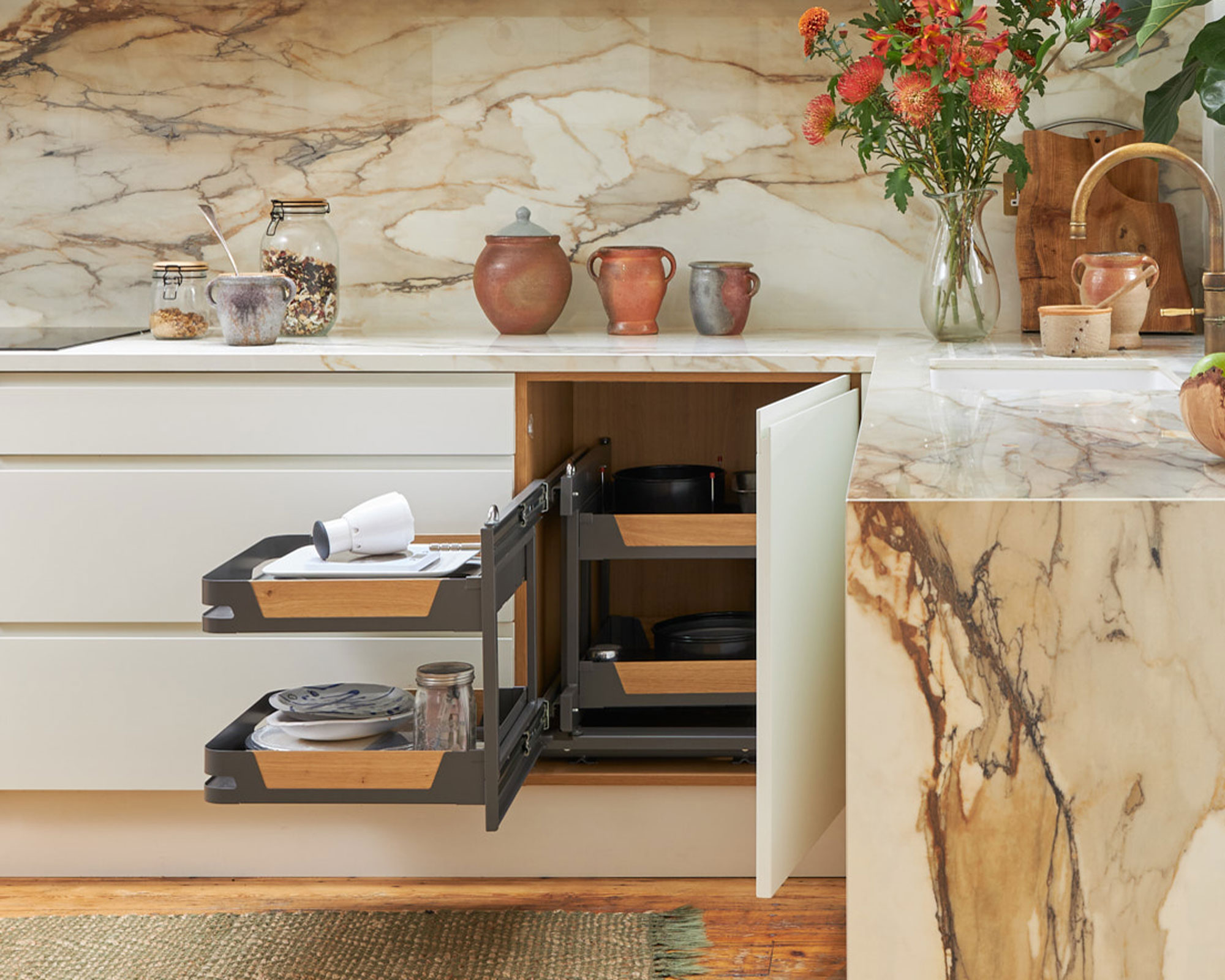
The days of struggling with a stack of plates at the back of a deep cabinet shelf are long gone; now we can pull out a drawer and see a whole dinner service neatly stacked, with pegs keeping everything in place. Drawers can also hold inserts with individual cut-outs for specific utensils or be divided up to contain cutlery. Pull-outs are another fantastic option that promises to make your life easier when it comes to storage.
The great advantage of a pull-out – often used as a larder – is how much it can hold, in relation to its width. They're often positioned either side of the fridge and freezer or alongside a bank of ovens. They can even work surprisingly well in corner cabinets, as mentioned above.
4. Harness dead space with plinth drawers and pegboard dividers
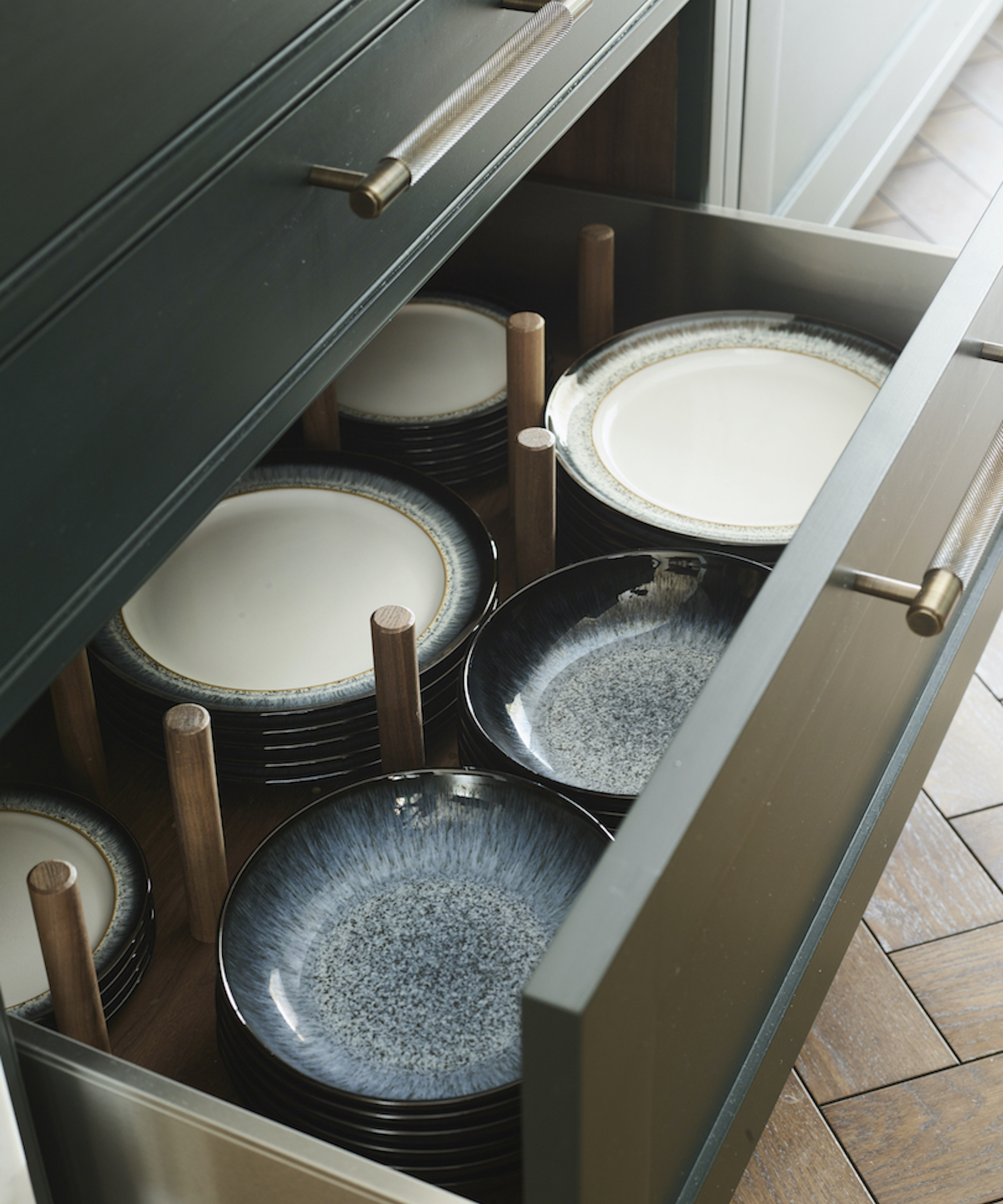
‘Exploring less obvious storage options is essential in small kitchens, but can create opportunities in larger kitchens too,’ says Dean Keyworth, director, Armstrong Keyworth. ‘For example, plinth drawers under base units are brilliant for stashing large roasting trays, chopping boards and cleaning supplies, which could make space for a range cooker or side-by-side fridge.’
You can also buy peg board dividers to keep each item from touching and scraping each other. This Pegboard Drawer Organizer from Amazon can be customized to fit your cabinet drawer size.
5. Invest in a space-saving appliance garage
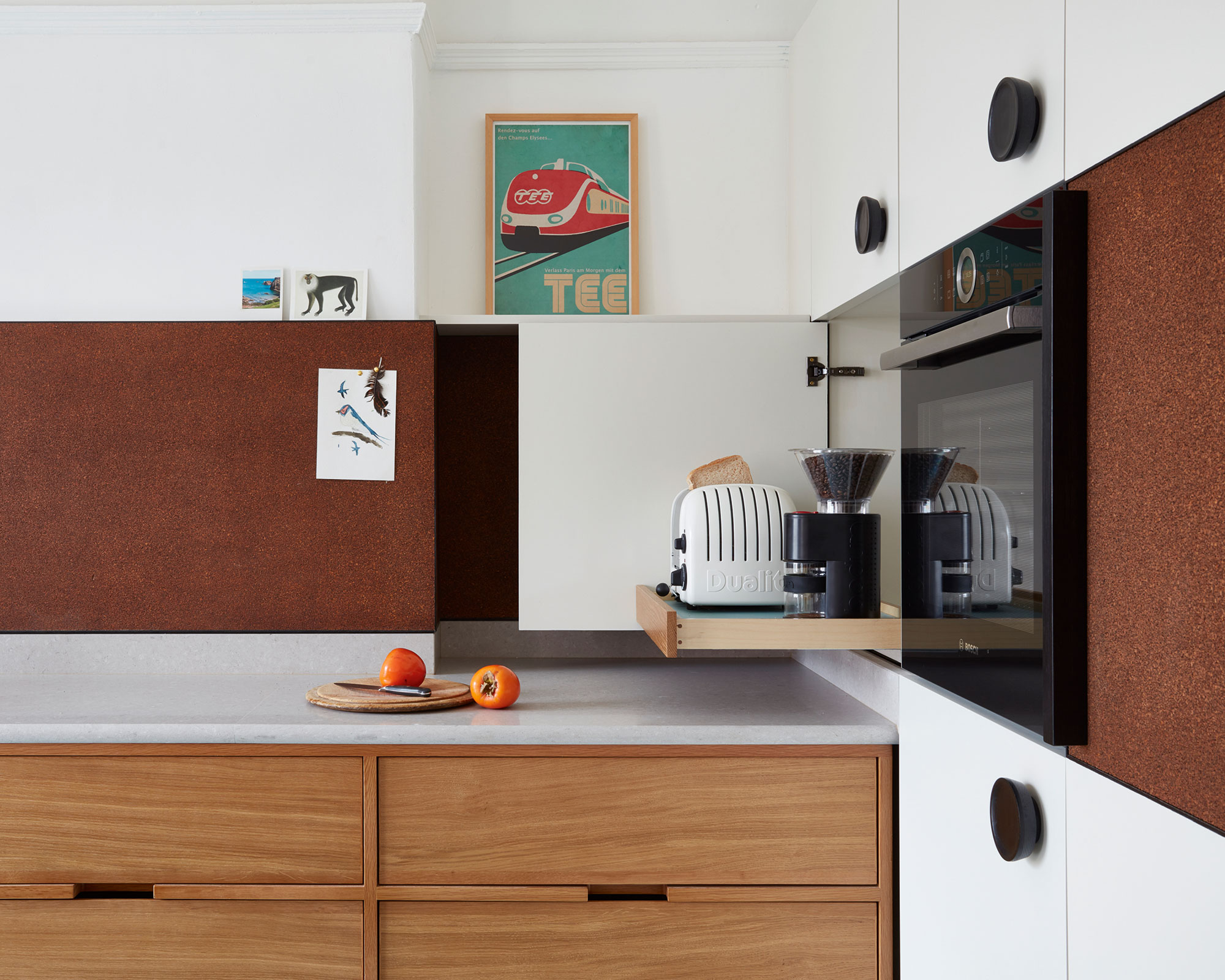
If you don’t have room for a full-size breakfast bar, consider a smaller alternative, such as an area on a corner of the kitchen countertop tucked behind a pull-down shutter, lift-up door, or a pull-out shelf.
‘A slide-in-and-out corner cabinet can be an “appliance garage”, making somewhere to put the toaster and coffee grinder that generally clutter up the countertop,’ says Howard Miller, director of H Miller Bros. ‘It is easy to pull out the shelf during a busy breakfast time then push it back into the cabinet and close the door when the toast and coffee are made.’
6. Fix a tension rod under the sink
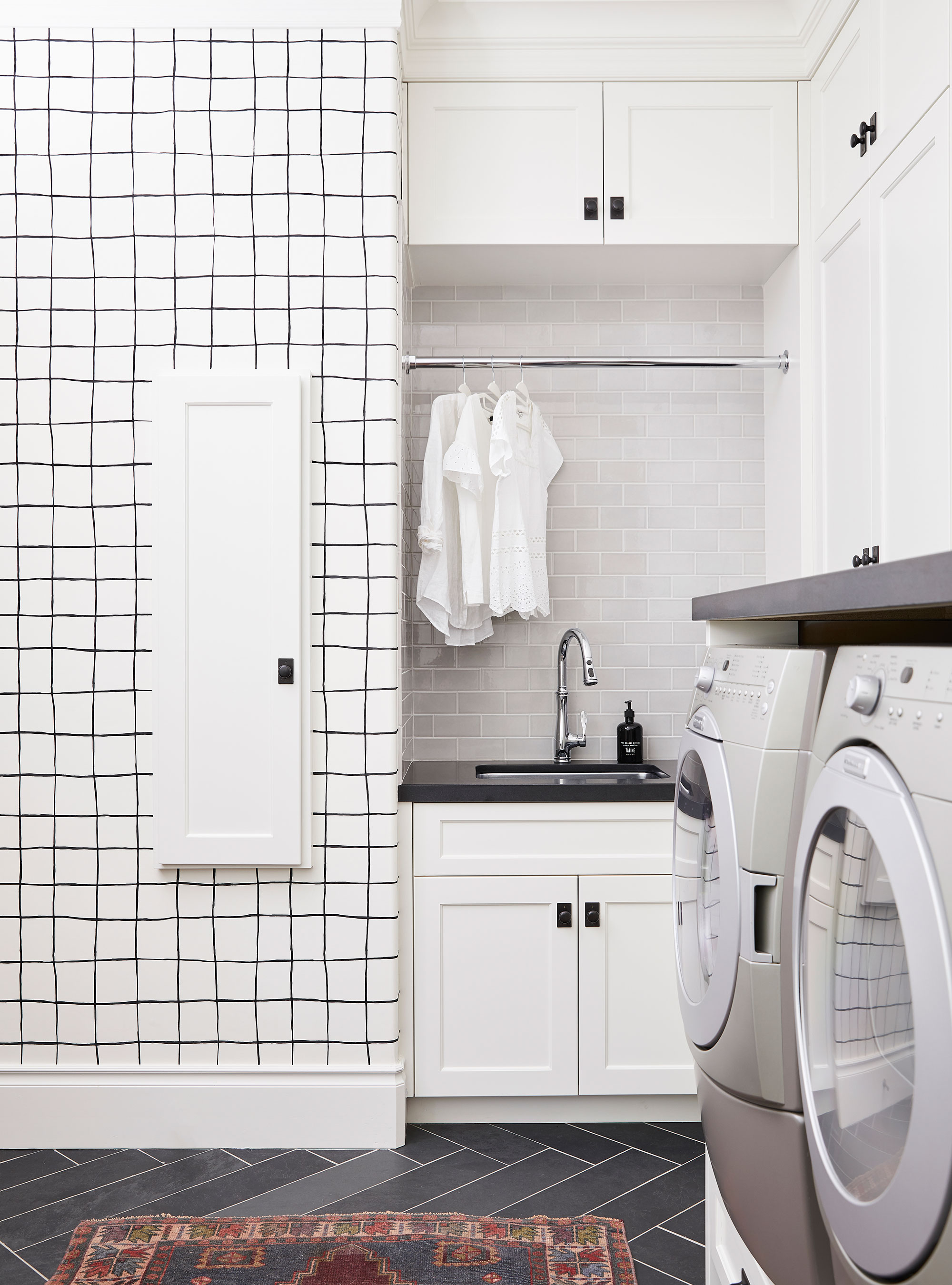
If your storage is limited, putting a tension rod in your cleaning cupboard will make use of every inch of space. Tension rods are ideal for under-sink cupboards as they allow you to fill the awkward gaps on either side of the sink, using otherwise wasted space. Fix the rod below the sink and hang your cleaning bottles on it so you can easily grab them as and when necessary.
Tension rods also work wonderfully in laundry rooms, as demonstrated above, to make the most of the space between two cabinets. You can use the rods to hang pots and pans, or even decorate with pretty decor and accessories to pretty up a kitchen.
7. Make use of cabinet doors
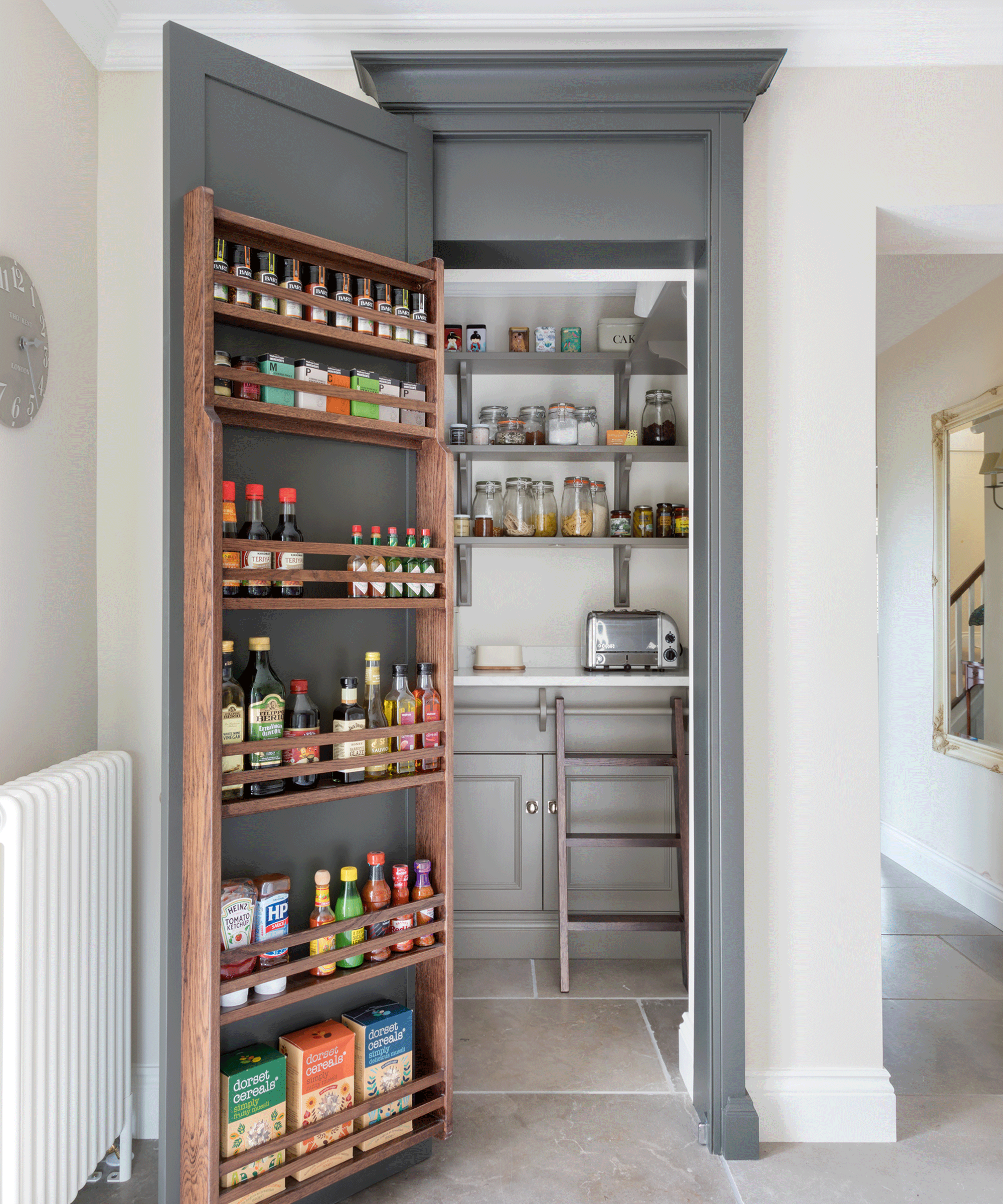
The back of the door should be seen as extra storage space or it’s an opportunity wasted. You can add holders for items such as bin bags or carrier bags from the supermarket, and throw in a hook or a hook rail for hanging cleaning supplies.
An adhesive or built-in rack provides at-a-glance storage for condiments, sauces, and small jars ensuring they won’t end up obscured by other items, and the beauty of a wood version is hard to beat.
Hung on the back of a door, one of these will boost the usefulness of individual cabinets and keep them tidier. In this kitchen, the rack fitted to the door to a walk-in pantry, but the idea is just as valuable for typical base and wall cabinet doors.
Alternatively, stick some self-adhesive hooks to the inside of the door, then loop some string around the handles of your cleaning brushes and other items that have a handle. These can then be hung on the door so they’ll take up less space in the cabinet.
Almost all kitchen companies offer a range of interior fittings, such as carousels for corner cabinets, racks to hang on the interior cabinet door, sorting systems for waste/recycling, drawer pegs, inserts and dividers, and plinth storage options. Bespoke kitchen companies will tailor make to suit your lifestyle, offering storage slots for chopping boards, drawers designed to hold 'coffee capsules' and spices.






